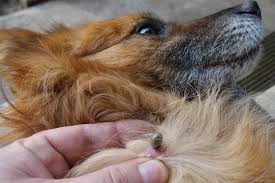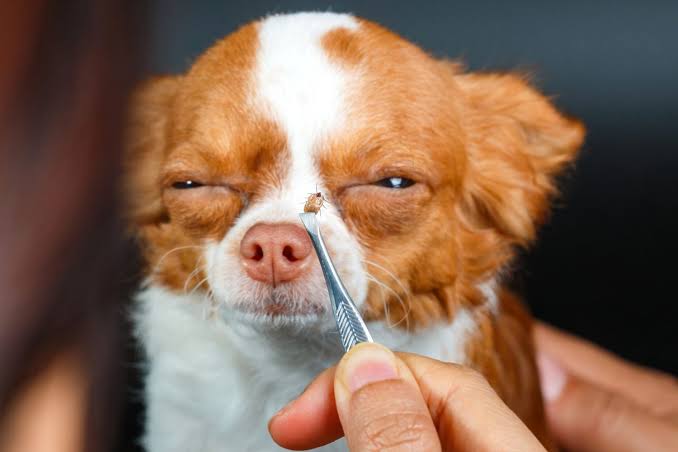Tick-borne diseases are illnesses transmitted to humans through the bite of infected ticks. These tiny creatures may seem harmless, but they can carry harmful germs that can cause various health problems, one common tick-borne disease is Lyme disease, caused by the bacterium Borrelia burgdorferi.
Lyme disease is widespread, especially in wooded and grassy areas where ticks thrive. If an infected tick bites a person, it can transmit the bacteria, leading to symptoms like fever, fatigue, and joint pain. Early detection and treatment are crucial to prevent complications.
Another tick-borne illness is anaplasmosis, caused by the bacterium Anaplasma phagocytophilum. Similar to Lyme disease, anaplasmosis is transmitted through tick bites. Its symptoms include fever, headache, and muscle aches. Timely medical attention is important for effective management.
Ticks often carry multiple pathogens, complicating the spectrum of tick-borne diseases. These ailments can have varying symptoms, making diagnosis challenging. Prevention involves avoiding tick-infested areas, using protective clothing, and employing insect repellents.
Understanding the life cycle of ticks is key to prevention. Ticks go through different stages, from larva to nymph to adult. They feed on blood at each stage, and during this process, they can transmit diseases. Being vigilant and checking for ticks after outdoor activities can help reduce the risk of infection.
Public awareness plays a crucial role in preventing tick-borne diseases. Educational campaigns highlight the importance of protective measures, like wearing long sleeves and pants and using tick repellents. Early intervention, such as removing ticks promptly, can also minimize the risk of disease transmission.
However, tick-borne diseases pose a significant health concern. Lyme disease and anaplasmosis are just two examples of the ailments that these tiny arachnids can transmit. Vigilance, preventative measures, and early detection are essential in safeguarding against the potential impact of tick-borne illnesses on human health.
Read Also: Jersey Cow: Grooming and Care Guide
Animals Affected by Tick-borne Diseases

Various animals can be affected by tick-borne diseases, just like humans. Ticks feed on the blood of different host species, and in doing so, they can transmit pathogens that cause diseases. Among the animals commonly affected are:
1. Wildlife: Ticks often infest wildlife, including deer, rodents, birds, and small mammals. These animals serve as reservoirs for tick-borne pathogens, contributing to the cycle of transmission. For example, deer can be carriers of the Lyme disease bacterium, and rodents may host various tick-borne illnesses.
2. Livestock: Domestic animals such as cattle, sheep, and horses are susceptible to tick-borne diseases. Anaplasmosis, for instance, can affect cattle and cause symptoms like fever and loss of appetite. Farmers and livestock owners need to implement preventive measures to protect their animals from tick-borne infections.
4. Pets: Dogs and cats can also be at risk of tick-borne diseases. Lyme disease, ehrlichiosis, and anaplasmosis are among the illnesses that can affect pets. Regular tick checks, preventive medications, and vaccination (where applicable) are essential to safeguard the health of household animals.
5. Birds: Birds are not only hosts for ticks but can also serve as carriers of tick-borne pathogens. Certain bird species can transport infected ticks across distances, contributing to the spread of diseases. Migratory birds, in particular, may play a role in introducing ticks and their associated pathogens to new regions.
Understanding the impact of tick-borne diseases on various animal species is crucial for comprehensive disease management. It emphasizes the interconnectedness of ecosystems and highlights the importance of a One Health approach, considering the health of humans, animals, and the environment. By addressing tick-borne diseases collectively, we can work towards minimizing the impact on both human and animal populations.
Damages Caused by Tick-borne Diseases

Tick-borne diseases can result in various damages, affecting both human and animal health. These illnesses, transmitted through the bites of infected ticks, can lead to several consequences:
1. Human Health Impact:
Physical Symptoms: Tick-borne diseases, such as Lyme disease and anaplasmosis, can cause a range of physical symptoms. These may include fever, fatigue, muscle aches, joint pain, and headaches.
Long-term Complications: if not promptly treated, some tick-borne diseases can lead to long-term complications. For example, Lyme disease may cause arthritis, neurological issues, and cardiac abnormalities.
2. Animal Health Impact:
Livestock Productivity: Tick-borne diseases in livestock, like anaplasmosis, can impact productivity. Infected animals may experience reduced weight gain, decreased milk production, and reproductive issues.
Pets’ Well-being: Dogs and cats can suffer from various tick-borne diseases, leading to symptoms such as lameness, lethargy, and in severe cases, organ failure. Veterinary care is crucial for managing these conditions in pets.
3. Economic Consequences:
Healthcare Costs: Treating tick-borne diseases in humans and animals can result in substantial healthcare costs. This includes medical expenses for diagnosis, treatment, and long-term care for chronic conditions.
Losses in Agriculture: Tick-borne diseases affecting livestock can lead to economic losses for farmers due to decreased productivity, veterinary expenses, and potential trade restrictions on affected animals.
4. Environmental Impact:
Ecosystem Dynamics: Tick-borne diseases can influence the dynamics of ecosystems. For instance, changes in the abundance of wildlife reservoirs and shifts in tick populations can impact the balance of local ecosystems.
Biodiversity Concerns: The spread of tick-borne diseases may influence the distribution and behavior of wildlife, potentially contributing to changes in biodiversity patterns.
5. Psychosocial Impact:
Quality of Life: Individuals dealing with chronic tick-borne diseases may experience a reduced quality of life due to persistent symptoms, limitations in daily activities, and the psychological impact of managing a long-term illness.
Overall, the damages caused by tick-borne diseases extend beyond immediate health concerns, affecting economies, ecosystems, and the well-being of both human and animal populations. Implementing effective prevention strategies and early intervention measures is crucial in mitigating these damages.
Read Also: The Appearance and Features of Goats
Control and Preventive Measures

Controlling and preventing tick-borne diseases involves a combination of strategies to reduce human and animal exposure to ticks and manage the spread of tick-borne pathogens. Key measures include:
1. Avoidance of Tick Habitats:
Awareness: Educate individuals about the habitats where ticks are commonly found, such as wooded areas, tall grasses, and leaf litter. Encourage people to stay on marked trails and avoid dense vegetation.
2. Protective Clothing:
Wear Long Sleeves and Pants: When spending time in tick-prone areas, wearing long sleeves and pants can minimize skin exposure, making it more difficult for ticks to attach.
3. Tick Repellents:
Use Insect Repellents: Applying EPA-registered insect repellents containing DEET, picaridin, or other recommended ingredients helps repel ticks. It is important to follow product instructions for safe use.
4. Tick Checks:
Regular Inspection: After outdoor activities, perform thorough tick checks on yourself, family members, and pets. Pay attention to hidden areas like the hairline, underarms, and groin.
5. Pet Protection:
Tick Preventatives for Pets: Use veterinary-recommended tick preventatives for dogs and cats. These can include topical treatments, collars, or oral medications to repel and kill ticks.
6. Environmental Management:
Tick Control on Properties: Implement landscaping practices that reduce tick habitats, such as keeping grass short, removing leaf litter, and creating a barrier of wood chips or gravel between wooded areas and lawns.
7. Tick Removal:
Proper Tick Removal: If a tick is found attached, use fine-tipped tweezers to grasp the tick as close to the skin’s surface as possible and pull upward with steady, even pressure. Thoroughly clean the bite area and hands after removal.
8. Personal Hygiene:
Shower After Outdoor Activities: Showering within two hours of being outdoors can help wash away ticks that may be on the skin but not yet attached.
9. Public Health Education:
Community Outreach: Promote community awareness through educational campaigns. Provide information on the risks of tick-borne diseases, preventive measures, and the importance of early detection and treatment.
10. Vaccination (where applicable):
Lyme Disease Vaccine: In regions where Lyme disease is prevalent, consider vaccination for individuals at higher risk, such as those living or working in tick-endemic areas.
Combining these measures contributes to a comprehensive approach to control and prevent tick-borne diseases. Public health efforts, community engagement, and individual responsibility all play crucial roles in minimizing the impact of these illnesses on both human and animal populations.
Frequently Asked Questions (FAQs) About Tick-borne Diseases
Q1: What are tick-borne diseases?
A1: Tick-borne diseases are illnesses transmitted to humans and animals through the bite of infected ticks. These diseases can be caused by various bacteria, viruses, or parasites carried by ticks.
Q2: What are common symptoms of tick-borne diseases?
A2: Symptoms vary, but common ones include fever, fatigue, muscle aches, joint pain, and headaches. Specific diseases may have additional symptoms, such as a characteristic bull’s-eye rash in Lyme disease.
Q3: How can I protect myself from tick-borne diseases?
A3: Protect yourself by wearing long sleeves and pants, using EPA-registered insect repellents, conducting regular tick checks, and avoiding tick-prone areas whenever possible.
Q4: Can pets get tick-borne diseases?
A4: Yes, pets can get tick-borne diseases. It’s essential to use veterinary-recommended tick preventatives, conduct regular tick checks, and keep pets away from tick habitats.
Q5: What should I do if I find a tick attached to my skin?
A5: Use fine-tipped tweezers to grasp the tick as close to the skin’s surface as possible. Pull upward with steady, even pressure. Clean the bite area and your hands thoroughly.
Q6: Are tick-borne diseases treatable?
A6: Yes, many tick-borne diseases are treatable with antibiotics. Early detection and prompt treatment are crucial to prevent complications.
Q7: Can ticks transmit multiple diseases?
A7: Yes, ticks can carry multiple pathogens, increasing the risk of transmitting various diseases during a single bite.
Q8: Are tick-borne diseases only a concern in rural areas?
A8: No, ticks can be found in urban, suburban, and rural areas. It’s important to take precautions regardless of the location.
Q9: Is there a vaccine for Lyme disease?
A9: Yes, there is a vaccine for Lyme disease. In regions where Lyme disease is prevalent, vaccination may be recommended for individuals at higher risk.
Q10: How can communities raise awareness about tick-borne diseases?
A10: Communities can raise awareness through educational campaigns, distributing informational materials, and organizing events to share preventive measures and early detection strategies.
Read Also: How To Raise Chickens – The Simple Secrets To A Great Backyard Flock

